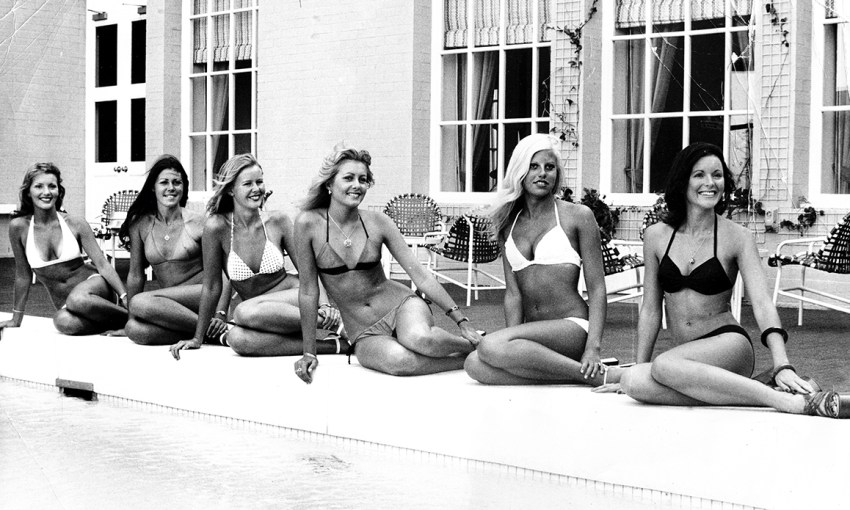For those who were there, Adelaide’s beach girl quests were innocent fun, held at a time when it was acceptable for women to be judged purely on their looks and deportment. Three former contestants take us back to the 1970s.
SA’s beauty pageants: The quest for success
As crowds gather on the hot sand, a group of young women in bikinis eagerly await their turn on the catwalk.
This scene played out on Adelaide’s metro beaches for decades, including in the 1960s and ’70s, when the Miss South Australian Beach Girl quests signalled the start of summer for thousands of locals. The events were a sign of the times: the novelty of television cameras at the beach, free stuff from local sponsors and the anticipation of young women hoping this would be their big break into modelling or acting.
The quests were held on Adelaide beaches including Semaphore, Glenelg and Brighton, and the format was simple: young female hopefuls would simply turn up on the day for their chance to walk the catwalk.
The women were also interviewed by an emcee, usually a reporter or presenter from Channel Nine, who sponsored the event and filmed each heat, playing a delayed telecast on local TV on Saturday evenings.
One of those emcees was former Channel Nine reporter Mike Drewer, who compered the event in the 1970s and says the contest was “quite a big deal” back in the day.
“The girls had to be single and not less than 17 years old,” Mike says. “The quest was extremely popular and was a highlight of the Adelaide summer. Large crowds attended and were given free product such as ice cream and soft drink by the event sponsors.
“While an event like this would not be deemed appropriate today, it was an innocent affair attended by family groups, as well as the boys. The entrants, in many cases, used their participation to launch careers in modelling. It was great fun.”
Eventually, events such as Miss Telethon and Miss Personality replaced the pure beauty quest format, but for those who were there and took part in the quests, it is remembered as a time of excitement and glamour, encompassing those first nervous steps into adult life.
Jane Reilly
Miss SA Beach Girl 1974
Jane Reilly vividly remembers the day she entered the Miss South Australian Beach Girl quest at West Beach in 1974.
She was a bubbly 18-year-old who had just commenced her studies to become a teacher. Little did she know that by walking across that hot sand and stepping up onto the catwalk in her green and white bikini, she would change the course of her life.
“It was quite funny because I had no intention of entering but I was at the beach with my mum, we went to the beach together a lot,” Jane says.
“Mum said, ‘You’ve got a great little figure, get up there. You look as good as the other girls, plus, you can talk underwater.
“I thought, ‘Okay, I’ll give it a shot’, and while most of the other women had been plucking and preening, I just got up there.”
Because she’d been a bit “knock-kneed” as a child, Jane’s mother Thea had enrolled Jane in the Pam Ellis Modelling School a few years prior, so as she walked up and down in front of hundreds of onlookers, Jane tapped into the few modelling tips she knew.
She kept her head up, smiled and answered with confidence when interviewed by the male emcee.
It worked, and Jane was voted one of the three finalists in that heat, winning the chance to appear in the final of the Miss SA Beach Girl quest, held at the Channel Nine studios.
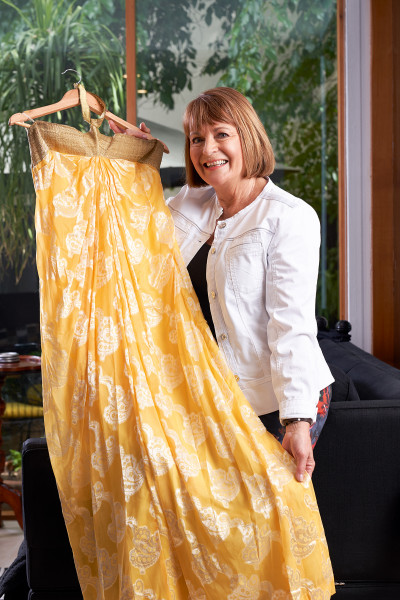
“Back in the 1970s, I just saw this all as a bit of fun. The beach girl quests were family events, where mums and dads and the kids would come down to watch.
“I thought it was all quite tame and I didn’t feel used in any way. There were girls of all shapes and sizes, and I was a genuine beach girl. I loved the beach.”
A newspaper clipping from the time shows Jane standing in the sea with the two other finalists with the headline “Triple treat in the heat”.
Jane went on to be crowned Miss SA Beach Girl, then represented South Australia in the Miss Australian Beach Girl quest in Perth. For that event, Jane recalls, she was told by organisers that her bikini was too risque and she would need a “more demure” two-piece.
“It was green with white strings holding the top together and the bottoms were only two inches wide, scandalous!” she jokes. “But nothing like the G-strings we see on the beach every day now.
“I was bemused that the promoters thought it too brief but, in a way, it reflects the more conservative times. I was taken shopping by a lovely lady who picked out the black two-piece I wore in the national final. “
Jane went on to be crowned Miss Australian Beach Girl, the first South Australian to take out the national title. She won a Valiant Charger worth $3983, a Polaroid Land camera worth $196 and a Commonwealth Bank savings account worth $1250.
“I was thrilled,” Jane says. “I didn’t think I had a chance of winning because I was brunette and not that tall or tanned like lots of the women. At the time taking part in the national final was the most exciting thing to happen in my life.
“We were transported around Perth in a fleet of limos, along with our chaperones, who kept a close eye on all of us! We stayed in the Sheraton Hotel, which was amazing as it was my first time ever inside a five-star hotel.
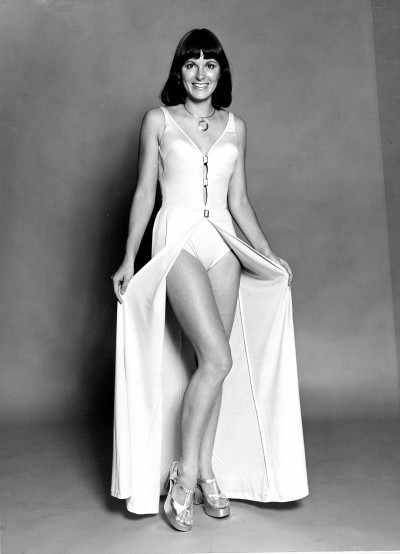
“The day we arrived there was a welcome reception in the Perth Town Hall hosted by the Lord Mayor. We also visited the local radio and TV stations.
“People loved seeing the Beach Girls and most of the time we were fully dressed, it was only for the TV cameras that we put on our swimsuits.
“It was great meeting girls from all over Australia and, being only 18, it was like something out of a movie.”
Winning Miss Australian Beach Girl automatically gave Jane entry into a competition held in Sydney called the Quest of Quests, where the parading young women were selected to represent Australia in quests such as Miss World, Miss Universe, Miss International and Miss Asia.
Jane won the right to represent Australia in the Miss Asia Quest in the Philippines, where she came third.
“I was there for three months and it was such a great experience,” she says. “I turned 20 when I was there and I was doing fashion parades and meeting lots of people, I even met President Marcos.”
Jane still has the gold silk halter dress she wore during the Miss Asia competition; a prized possession.
“Not that I fit in it anymore,” she laughs.
By the time she flew home from the Philippines, Jane’s dreams of becoming a teacher had begun to shift. Around the time she graduated from teacher’s college, she began getting calls from television executives who had spotted her potential as a natural presenter.
“Ron Christie who was the TV Production Manager at SAS Channel 10 kept ringing and asking me to come down and audition but I just wasn’t sure,” Jane says. “Finally, on about the fourth phone call my mum said, ‘If you don’t take this opportunity, I will’.
“So, I went to see him and that’s when I started doing Early Birds.”
Early Birds was a local children’s television show, broadcast live from 7am to 9am. Jane also signed on to another children’s show, Fat Cat and Friends, with iconic singer Patsy Biscoe and of course, the all-dancing Fat Cat. It was broadcast nationally, pre-recorded in the Channel Ten studios two nights a week.
“I’d do Early Birds in the morning then go home for a few hours and come back and do Fat Cat and Friends in the evenings,” Jane says. “I just took it all day by day and I figured if the bubble burst I’d go back to teaching.”
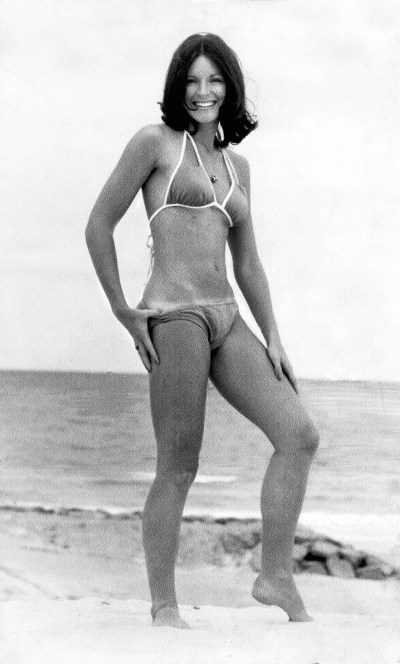
But as history shows the bubble never burst and Jane went on to enjoy a hugely successful 45-year media career.
She moved from children’s television into serious reporting for ABC News, employing her natural and genuine way with people during interviews. But the role she is perhaps best known for is as Channel Ten’s weather presenter, a role she held for 17 years, before moving into the world of radio.
Reflecting back on the beach girl days, Jane says she is grateful she took the plunge at the beach that day in 1974.
“The Miss South Australian Beach Girl experience opened the door to television and a career in the media, so I’m thankful for that,” she says. “A career like mine is rare; I was very fortunate.”
Recently, Jane says, she was interviewed by a researcher from Flinders University who was working on a television show about feminism.
“She was shocked when I said the beach girl quest was about total liberation back then,” Jane says.
“We had the pill and we could put our bikini on and just feel liberated. We were happy with our bodies and we weren’t doing it to impress men, we were doing it because we were comfortable with who we were and how we looked.
“I think a lot of things from the ’70s get frowned upon now but it was different back then; it was more free, fun times.”
Avalon Steele
Miss SA Beach Girl 1976
As a little girl, Avalon Steele dreamed of the day she’d be old enough to enter the Miss SA Beach Girl quests.
So, in 1976, as soon as she turned 17, Avalon headed to enter the first heat at Glenelg beach, a long way from her home in Lower Mitcham, ready to parade on the catwalk in her aqua blue bikini.
“I really wanted to enter but I didn’t have a lot of confidence, so it was a bit nerve-wracking getting up there,” Avalon says. “I guess I was hoping it might help me build more confidence.”
Avalon remembers nervously strutting up and down the catwalk as the crowd cheered and whistled.
“There was a big crowd, so it was overwhelming. I just didn’t want to trip and make a fool of myself,” she says.
“I felt very self-conscience of my every move, in bare feet. I didn’t have a number in the heats, but in the final I wore number 22 on my upper arm. I still have it.”
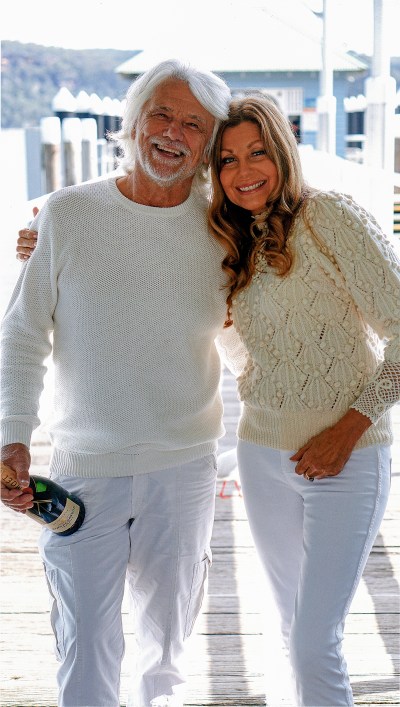
Avalon made it through to the final in that heat and says she “couldn’t believe it”.
“My photo appeared on the front page of The News. I was shocked, but proud, to see myself,” she says.
“It was thrilling because I was a true beach girl, I went to the beach every weekend and I sun-baked to get the brownest tan I could possibly get.
“When I wasn’t at the beach I would lay out in our backyard on the concrete around the Hills Hoist clothesline in 36 degrees, covered in oil. My sisters and I used to use olive oil. The stifling heat made me feel sick but I thought it was worth it for the tan. We didn’t realise the dangers back then.”
Avalon also remembers the actual date when she walked into Channel Nine for the final of the Miss SA Beach Girl Quest 1976 — it was Saturday, February 28. It was the night she was crowned Miss SA Beach Girl.
“I couldn’t believe it,” she says. “I won a 14-day P&O cruise, $500 cash and a colour TV. No one had a colour TV in 1976, I had the first one of anybody I knew.”
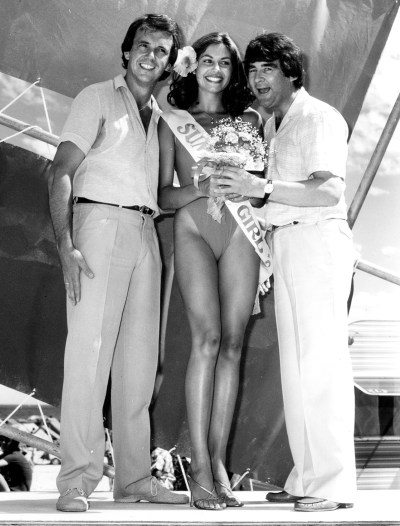
But there was also a downside to the success for Avalon, who had begun to appear in the local paper as a model. While the shots were always tasteful, they did garner some unwanted attention.
“I did a lot of page three for The News but there was no payment, and they put the suburb in where I lived so I got a few nuisance phone calls and a bad letter from a creepy guy,” she says. “I had to get the police involved. After that, I asked them not to print where I lived.”
By then Avalon was working as a secretary and typist at Dairy Vale and she remembers her boss being understanding when she needed time off to attend the Miss Australasia Beach Girl final in Perth.
“I’d never travelled in a plane before. So there I was, first class, on TAA, landing in Perth and being taken to the Sheraton Hotel where we stayed for about a week,” she says.
“I didn’t win; Karen Pini won that year. She went on to be the runner up in Miss World and she was the first Australian Playboy centrefold.”
As Miss SA Beach Girl, Avalon gained entry into the Quest of Quests in September of that same year. She was crowned Miss Young International Australia.
That competition was held on the Gold Coast and Avalon remembers the many events the women attended. They were paraded around the streets in a convoy of MG sports cars, there was also lots of press coverage, and of course plenty of male attention.
“We went from the Gold Coast to Brisbane, Melbourne and Sydney doing fashion parades for a department store called Walton’s, being driven around and staying in nice hotels,” she says.
“One night in Sydney we went down to Rose Bay, to the sailing club, and there were a few famous car drivers like Sterling Moss and Jack Brabham. I remember that night particularly.”
Then, in 1977, Avalon travelled to Tokyo to represent Australia in the Miss Young International Quest.
“I went to Tokyo for 10 days, and stayed right near the Emperor’s Palace, in the Palace Hotel; very swish,” she says. “It was incredible. On the third day, we were put on the back of Harley Davidson police motorbikes, and we were riding through the streets of Tokyo in convoy, flying each country’s flag.
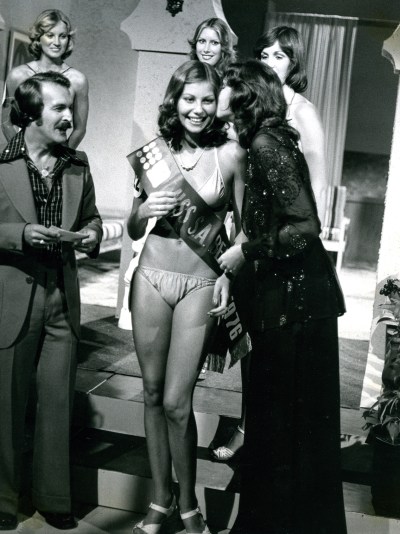
“There were busloads of girls going to various places and meeting Japanese dignitaries at cocktail parties. It’s a funny thing these quests because it’s like a whirlwind for a week and then you go back to your normal life. It’s a rise and a fall.”
Avalon didn’t win, settling back into her job at Dairy Vale for a few years. Then in 1980 she entered and won the “New Model Quest” a contest jointly sponsored by The News and McLeod’s Model Agency, a high-profile agency based in Adelaide in the 1980s and ‘90s. A modelling course was one of the prizes.
Modelling work with Harris Scarfe and David Jones followed, including a couple of television commercials, before Avalon decided to try her luck again, this time in the Miss Summer Girl competition in 1981.
“It was a similar concept to the Beach Girl but they held it at different venues, not necessarily the beach,” she says. “I went to the yacht squadron at Outer Harbour where they picked three of 20 girls as finalists and we had to wear a swimsuit, and sporty clothes like shorts and a tank top.
“I was one of the 20 or so finalists who gathered at Glenelg beach where we paraded along a catwalk in front of the crowd for the Birdman Rally on Australia Day weekend. I won that as well.
“I was just following the crest and enjoying it all. That one led me to Perth for the Miss Australia quest to select Miss Universe Australia, but I didn’t win that one.”
By 1982 Avalon decided to move to Sydney where she worked as a computer operator for a fashion fabric company.
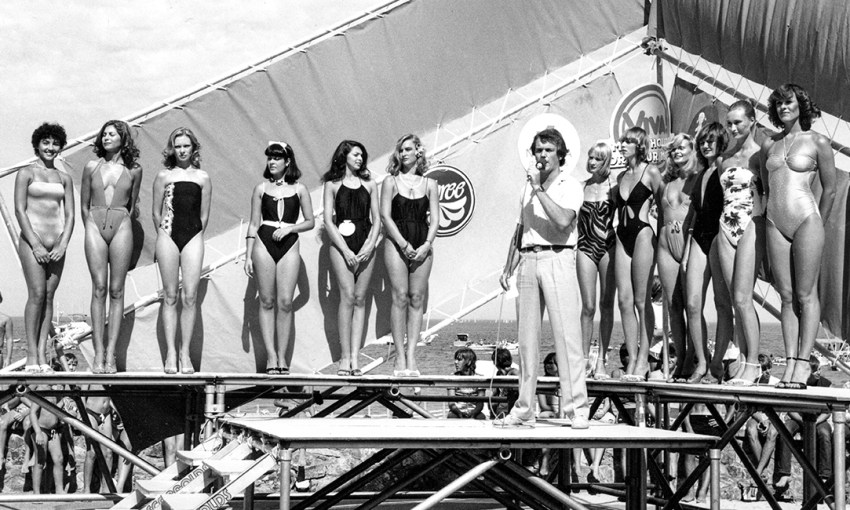
She has now lived in Sydney for almost 40 years and she and her partner Rudi Annus live on the northern beaches where they run “Palm Beach Bed and Breakfast” at the idyllic “Summer Bay”, where television show Home and Away is filmed.
“Still the beach girl,” Avalon says.
While Avalon turned her back on modelling for many years, today, at 62, she is rediscovering her love of the trade.
“In 2016, at 58, I became a model at TVSN shopping network,” she says. “I saw an ad for mature models and I’ve been doing it since then. I model fashion, shoes, skincare, haircare, make up, handbags and it’s all live to air.
“Recently Rudi and I have also joined The Look Management casting agency for television commercials.
“It’s nice to step back into it, particularly in this way as there are no swimsuits or underwear involved. This style suits me, it’s a lot of fun.”
Avalon says she looks back on her beach girl days fondly, acknowledging times have now changed.
“I don’t talk about them a lot to people because now it’s not so politically correct to parade in a swimsuit and be judged on your measurements, but at the time it was, so it felt appropriate,” she says.
“I tried my hardest each time and went with the highs and the lows. I think the judges were looking for a certain level of intelligence, grace and good morals. I think they were looking for a certain overall style.
“I look back on my achievements with pride. Non, je ne regrette rien.”
Marie Jonsson-Harrison
Miss SA Beach Girl entrant 1976
For Marie Jonsson-Harrison the Miss SA Beach Girl Quest was a scene of glamour and excitement.
Marie had moved to Australia from Sweden and every summer she would sit glued to her television screen watching the beauty pageant, eager to take part.
“I just thought all the girls were so beautiful and I really wanted to participate, but I was way too young,” she says.
Marie’s aunt Gun Jonsson had been crowned a beauty queen in Sweden in 1946 and, at 17 years old, Marie wanted a crack at the crown here in Adelaide.
“As soon as I was 17, I entered,” she says. “Bryan, my boyfriend at the time, drove me down to the beach at Glenelg, all the way from my home in Hope Valley.
“I didn’t tell Mum and Dad I was entering, I was feeling a bit insecure and that it may all end in tears and I wouldn’t get anywhere. I didn’t want to have too many expectations, so I didn’t tell them prior.”
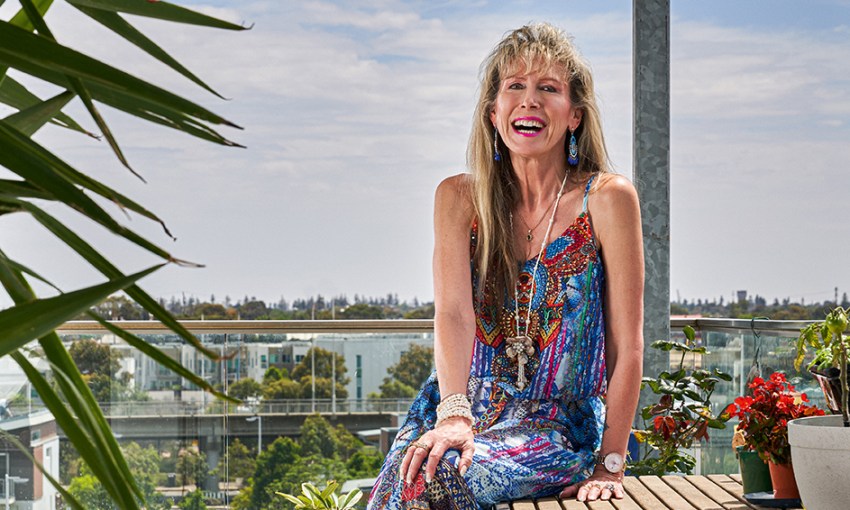
At 17, Marie had dropped out of school and done a variety of jobs, including working at a service station and in retail. She was hoping the beach girl quest would be a springboard into the life she dreamed of as a model and actress.
“I was very nervous as I had never done anything like that, no modelling or anything,” she says. “But once I got on stage, it wasn’t that hard. They had set up a big long catwalk and we had to walk up and down it a few times and do some turns and then come back and say our names. Then we were asked a few questions, but nothing too in-depth.
“They asked you what your aspirations were, they always asked your favourite colour and favourite food and they always asked, if you won, what would you do with that opportunity? I said my ambition was to continue and be a model and actress.”
Marie also remembers lots of cheering and wolf whistles from the audience and that her boyfriend Bryan — now her husband of almost 40 years — was happy to be there to whisk her away after she made it to the final three in that heat.
She raced home to tell her parents Teddy and Britt the news. “They were thrilled,” Marie says. “They’ve always been my biggest supporters.
“I was lucky enough to be the one chosen to appear in the newspaper article the next day, because I made the final three.
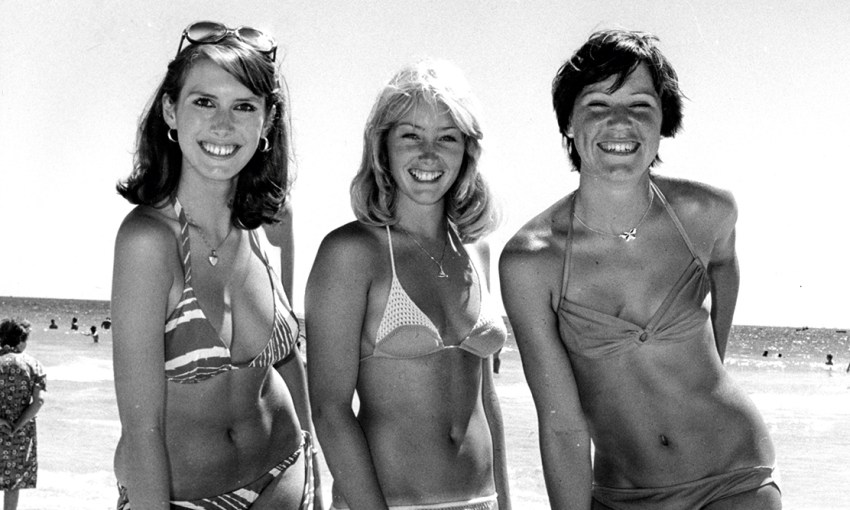
“Somehow I was able to snag a photo by myself and it was so much fun seeing it in the paper.
“That week I went down to Glenelg with Mum and Dad and we walked past a couple of shops and they had a big, blown-up picture of me and it said something like ‘We sponsor the Miss Beach Girl quest’. It was very exciting.”
While she didn’t take out the major prize as Miss SA Beach Girl, the experience did catapult Marie into the world of modelling. Well known Adelaide model agent Tanya Powell was just starting out in business on her own and, having seen Marie’s photo in the paper, she tracked her down and asked if she’d like to sign up with her agency.
That was the beginning of Marie’s professional modelling career and she went on to huge success, working all over the world including Japan, Sweden, Switzerland, France, Spain, Germany, the Philippines and “probably a heap more I can’t remember”.
“Not winning Miss SA Beach Girl was not great but, in another way, it was probably good for me because it made me strive harder to achieve in my modelling career, and to do as well as I did,” Marie says.
She went on to win Australian Model of the Year in 1982 and ’83 and she also took out Miss Summer Spain in 1981 in an event similar to the Australian beach girl quests, held on the beach in Barcelona.
Eventually, Marie’s career led her to the big league in the US and she was asked to sign with the prestigious New York model agency Elite in the early 1980s. However, Bryan had proposed by then so Marie chose instead to marry Bryan and stay living in Adelaide. Her work after that was based mainly in Australia.
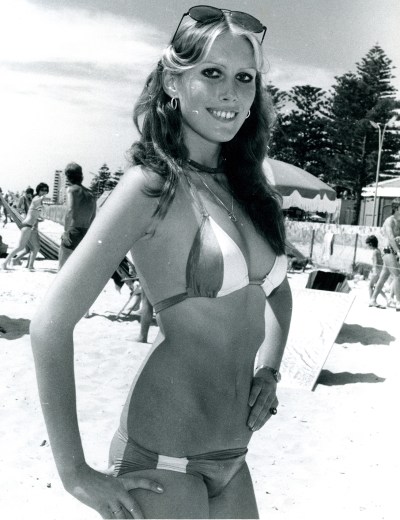
Today, the couple has two children, Hillivi, 29, and Kai, 33. Hillivi is a model and has competed in the Miss Universe quest where she was a finalist.
In recent years, Marie has gone on to become an established and successful artist.
“I followed up international modelling with an international art career and ended up on the cover of magazines in both careers,” she says.
She has no regrets about signing up for the Miss Beach Girl quests all those years ago and sees it as a shame that quests are no longer held on the suburban beaches of Adelaide.
“A lot of people feel these days that the beauty competitions have fallen out of favour and people think it’s not on and not about liberated women,” she says.
“I felt the opposite, that it did liberate you and help you grow up and feel strong and confident. It was really good for me.
“I think we’ve gone too far in political correctness. Why not celebrate the fact that you are young and your body looks great and you can be in a bikini, and that’s perfectly fine.
“It’s not everyone’s cup of tea but for the girls who want to take part, they should be allowed to, I think.”
This story first appeared in the Dec 2020/Jan 2021 issue of SALIFE magazine.



